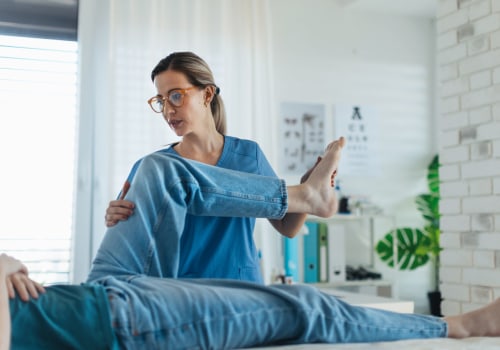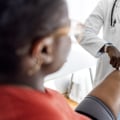Most people can take NSAIDs or acetaminophen.
Knee pain can come
and go. For example, you may feel pain when you move or bend your knee. But it may get better when you rest. Some people also feel pain at different times of the day.You may feel more pain first thing in the morning when you wake up. It's also common to have knee pain at night, especially if you were physically active earlier that day. You can usually treat knee pain at home with over-the-counter (OTC) pain relievers and taking a break from physical activities. If you are physically active or play a sport, you may need exercises to correct movement patterns that may be affecting your knees and to establish good technique during the sport or activity.
Exercises to improve flexibility and balance are also important. Use RICE. Rest, ice, compression and elevation (RICE) are good for knee pain caused by a minor injury or a flare-up of arthritis. Give your knee a little rest, apply ice to reduce swelling, use a compressive bandage, and keep your knee elevated. If your knee pain is new, ask a doctor to check it out.
It's best to know what you're dealing with as soon as possible to prevent further damage. A cane or crutch is not something to be ashamed of and can be of great benefit in helping to ease the weight of a sore knee. Knee pads can also be useful for stabilizing the knee. Gentle stretching and other low-impact exercises can strengthen the muscles that support the knee joint. Start by stretching your heel, calf, quadriceps and hamstrings, and work your way up to a half squat, calf raises and other leg lift variations.
Take paracetamol with breakfast, lunch, dinner and just before bed to get the most benefit during an exacerbation of knee pain. However, there are things you may be doing in your daily life that could be making your knee or knee pain feel worse. A healthcare provider will suggest treatments to treat knee pain depending on the cause and how much it hurts. Knee pain can be caused by several different factors, such as sprains and strains, tendonitis, a torn ligament, or cartilage damage.
It's important not to self-diagnose knee pain and instead have it checked out by your GP or a medical specialist. Knee joint pain can be a temporary short-term problem, but it can also be a chronic (long-term) problem. If you find that acetaminophen, either alone or in combination with an NSAID, doesn't relieve knee pain and you're still feeling pain and discomfort, talk to your family doctor or specialist. Many patients, up to two-thirds of the patients I see at my clinic, say that these supplements are beneficial and help alleviate knee pain.
Some types of knee pain can be treated at home with certain exercises and medications to relieve pain, while others may require surgery. However, it is rare for a patient who can walk to have muscles around the knee so weak that this weakness contributes greatly to knee pain. Changes in your lifestyle to protect your knee joints could help you control pain without surgery and even delay total or partial knee replacement in the future. Sometimes, people assume that knee pain is just a part of aging or an inevitable side effect of their jobs or activities. Prepatellar bursitis is a common complaint of people who work on their knees or who perform activities that are at risk of being hit in the knee.
If knee pain is due to injury, surgery, or arthritis, gentle stretching and strengthening exercises can help alleviate pain while improving flexibility and range of motion.










